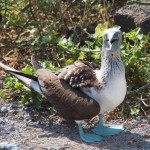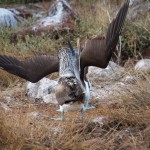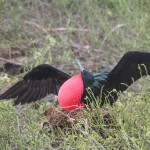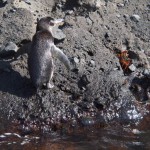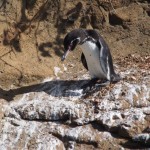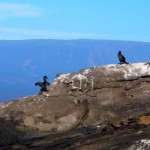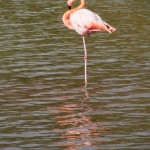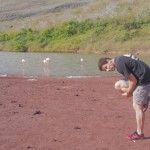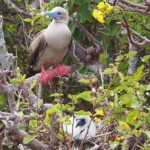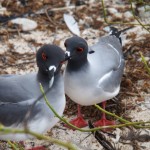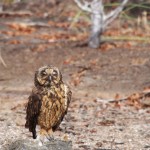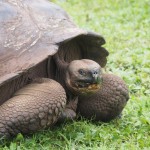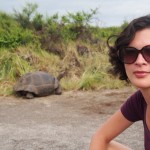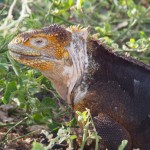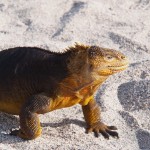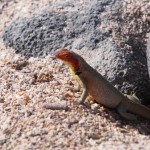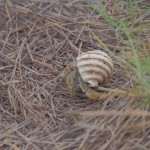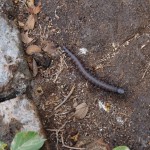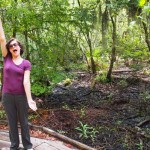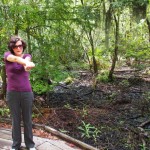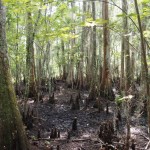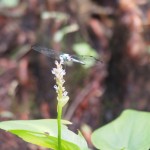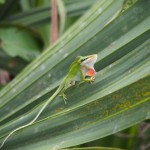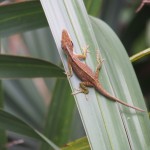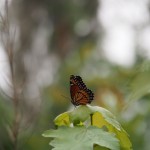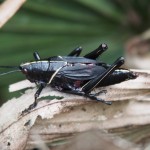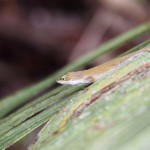If there were ever gang warfare in the Galapagos I believe the sea creatures would split along time honoured lines: Deeply Cute vs. Extremely Ugly (but cool).
On one side: marine iguanas, which rock a spiky prehistoric vibe and lie around in huge leathery evil-looking piles. Their minions would be the crabs, which are bright red and disposable – like those nameless expedition crew members in Star Trek – but which crawl, and run, and jump, and fight for tourists’ entertainment. They also shag on camera and walk on water from time to time, both of which are pretty surprising when you see them for the first time.
On the other side: sea turtles (cute, but a little dull – see Lucy’s opinions of tortoises, except underwater) and sea lions. Now, let’s get this out of the way: sea lions are cute. Deeply cute. Furry, shiny, frolicking in the water cute. Sandy, cuddly, lying in the sun in pairs cute. Baby sea lions are like neutron stars of cute, tiny, fluffy, bleating, big-eyed balls of pure cuteness from whose gravitational pull no unbiased critical opinion can escape. Did I just write that sentence? Yes I did.
The victors? Probably the pirates, who stopped in the Galapagos, clubbed the seals, ate the tortoises, trod on the crabs and left the marine iguanas alone because they smell of rotten fish. For our part, we wandered and snorkeled wide-eyed through the islands being completely ignored by all the wildlife (you are recommended not to get within two meters, and I am guessing this is lest you spoil other tourists’ photographs, as the animals seem truly nonplussed by all the attention).
-
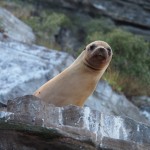
-
Arp!
-
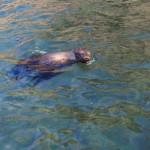
-
AARP!
-
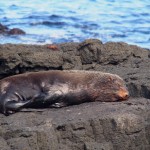
-
Zzzz. Arp.
-
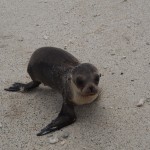
-
arp
-
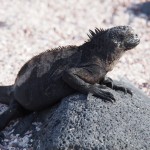
-
Punk Iguana
-
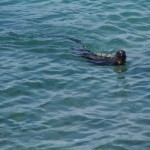
-
Swimming punk iguana!
-
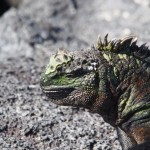
-
Rocking the algae on the face look
-
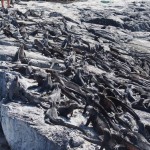
-
Definitely no shortage of iguanas
-
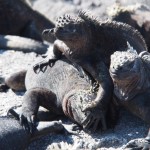
-
My personal favourite – foot in face!
-
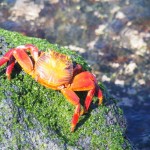
-
Crabs, captain. Thaaaaasands of them!
-
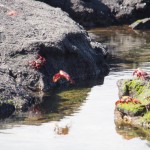
-
Flying crabs. Camera love.
-
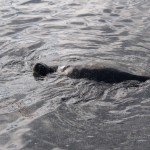
-
Sea turtle, just chillin’
-
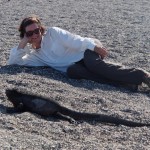
-
That’s the problem in the Galapagos – getting near to the animals
-
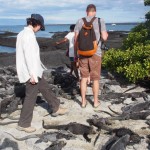
-
That’s the problem in the Galapagos – getting near to the animals
-
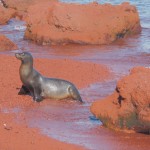
-
Sea lions on Mars!
We have the pre-requisite dozens of photographs to show for this trip, not one of which was taken underwater. Unfortunately our closet camera love doesn’t really allow putting our shiny new Olympus into those expensive, high-tech plastic bags which are completely seawaterproof unless you get them wet. As such, you will have to take our word for it that we saw about a thousand different species of fish (including the coral eating, sand-pooping parrot fish), octopi, stacks of sea turtles, penguins swimming underwater and playful, somersaulting, bubble blowing sea lions. When your biggest gripe is that you only spotted two of the three different types of local sharks then life isn’t too bad. Also, neither one of us got eaten by a shoal of hammerheads, which is a plus at this early stage of our trip.

